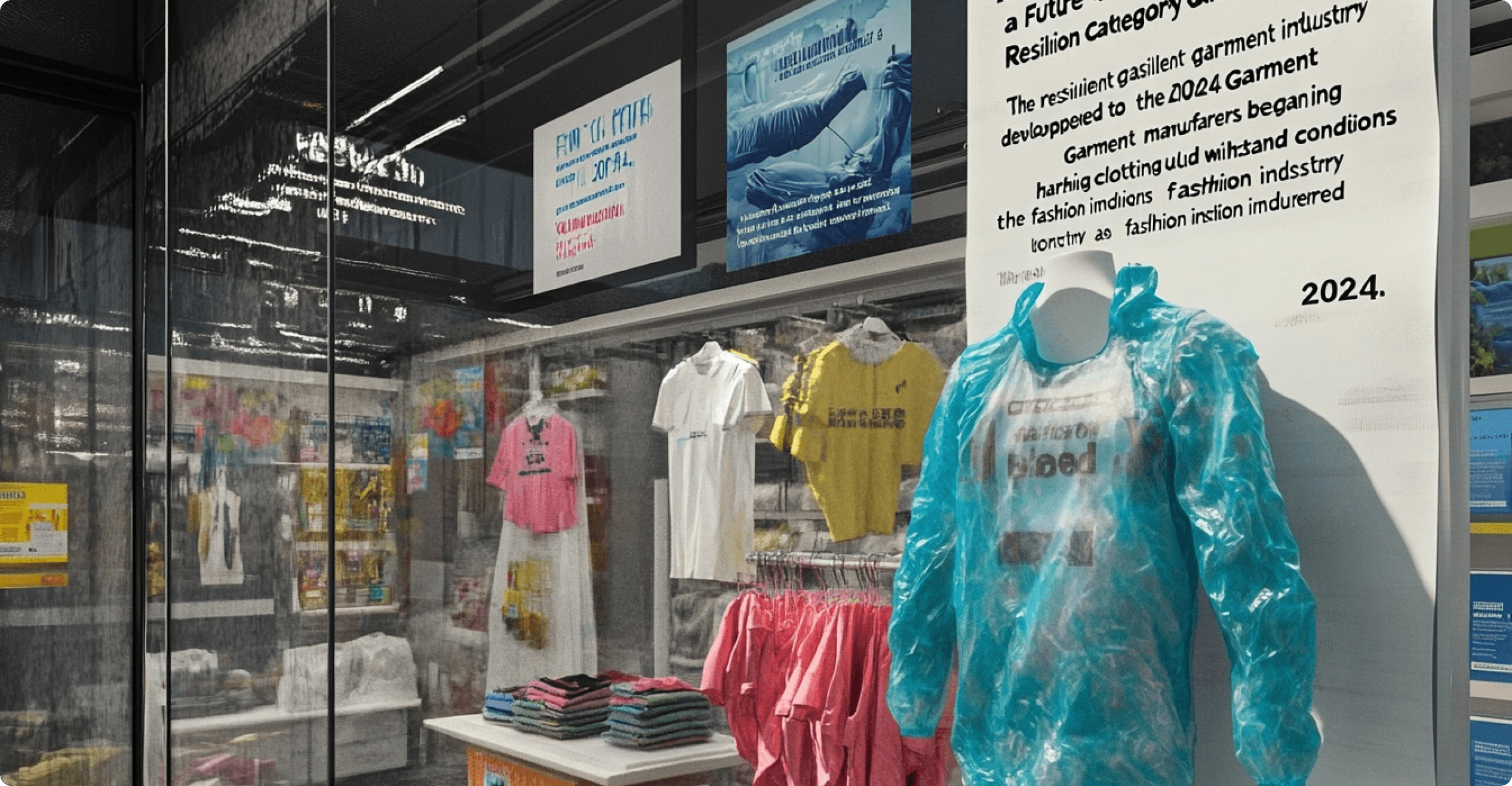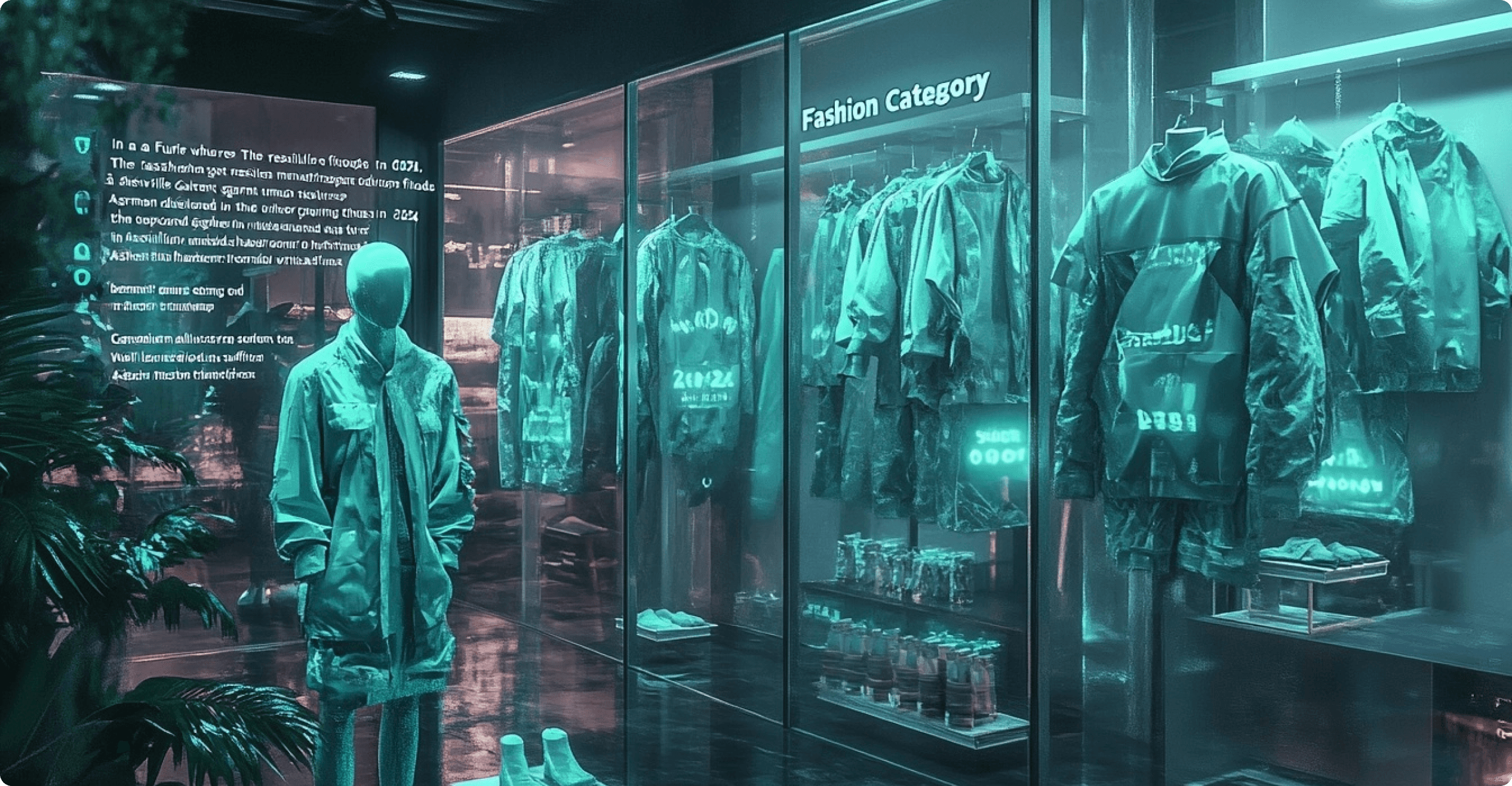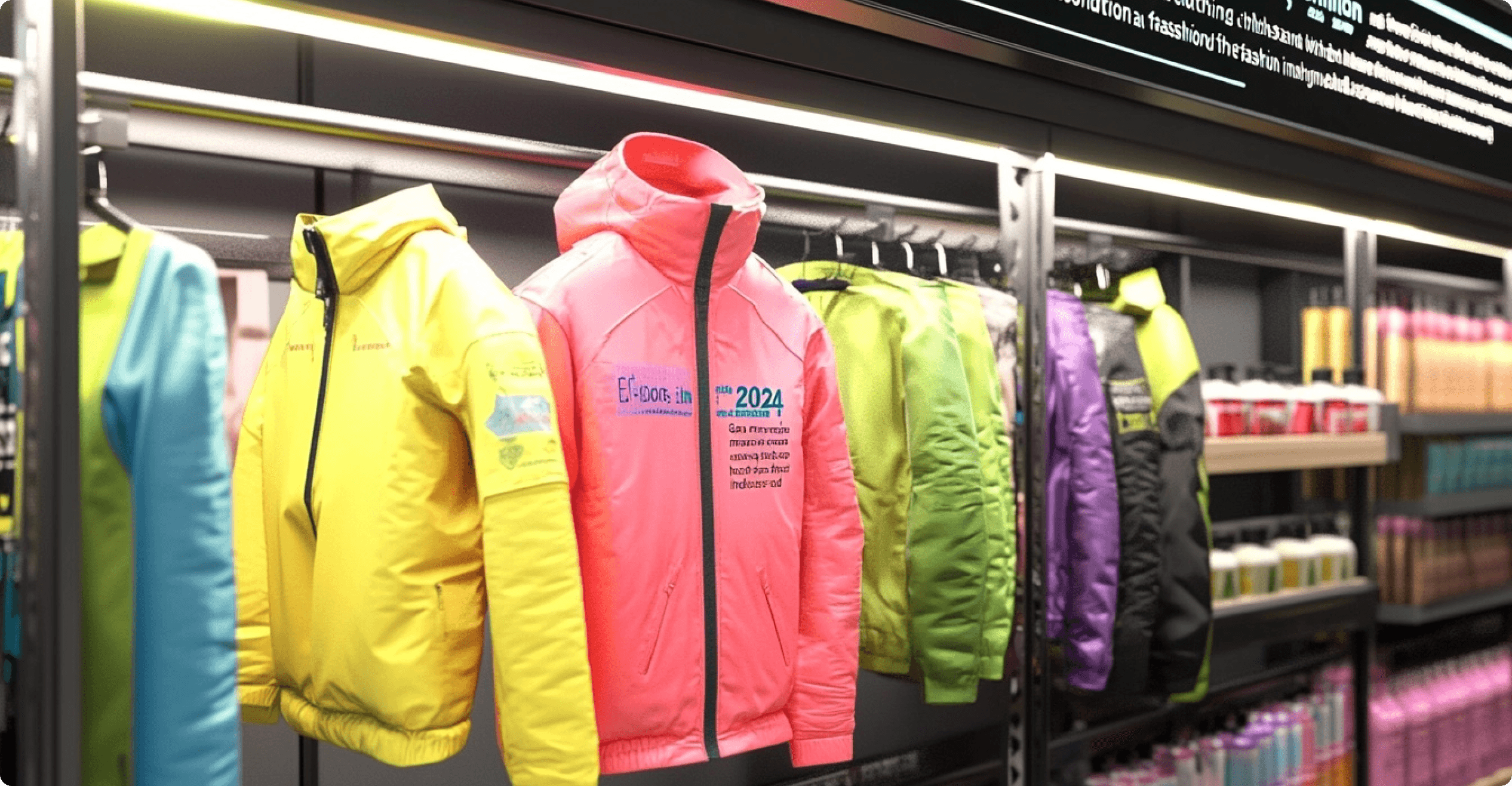BreatheSkin # 3006
Found in a secondhand clothing store in 2074.

Speculative Design Futures


BreatheSkin # 3006 | An Adaptive Shirt | Found in 2074 in a secondhand clothing store
BreatheSkin is a popular resilient clothing brand, this particular shirt was produced in the late 2060s during a time when wearable technology was cheaply integrated into all fashion as the world continued to grapple with extreme weather on a daily basis. The item number refers to the number of extreme global weather events relating to the year of manufacture and also serves as a value-signal for climate-fashion loyalists.
The shirt now stands as both a critique of the sustainability rhetoric of the past and a reminder of how human efforts to memorialize disaster can fall prey to the very systems they seek to challenge.

The World We're In
In a Future where Resilience is a Fashion Category. The resilient garment industry developed in response to the Asheville floods in 2024. Garment manufacturers began making clothing that could withstand harsher conditions as the fashion industry suffered from flailing sales due to population displacement and the accompanying destabilisation of the retail market. Initially resilient garments were simply more durable to enable continual wear for users without stable housing. As technology progressed the garments became fancier and incorporated bio-mimetic materials. BreatheSkin has been there since the beginning.

Fashion still Favours the Privileged. Resilient garments swiftly became associated with ideas of privilege and socio-economic stratification as next-generation. garments were priced out of reach of ordinary people. However as mono crop cotton simulation farms emerged in 2051, sweatshops again took root in poorer climate-affected regions and prices dropped. We can see that this particular shirt was produced in one such sweatshop, as indicated by the square tag at the neck where workers customarily cut off the edge of the Breatheskin rectangle logo in a small act of defiance at the contradiction between story and reality.
Even the Best of Intentions Continue to Corrupt. During its peak production the BreatheSkin range was marketed not just as a piece of clothing, but as a symbol of resilience in the face of global climate challenges. The back of the shirt reads without a hint of irony - "Resilience is a practice. Not a Product".

Many Still Look to Technology as the Solve. The shirt was designed to offer personal climate control helping the wearer adapt to shifts in temperature, humidity and air quality. BreatheSkins were engineered with bio-responsive fibres that would open and close microscopic ventilation pockets based on ambient moisture levels, mimicking the skin's regulation of temperature and perspiration.
But History is Always Swiftly Forgotten. The lines on the sleeve which appeared on all BreathSkins were a dual purpose motiv, designed to represent both the 'arteries of hope' that connect us all and the systemic ripple effects of the floods which gave birth to the resilient garment movement.
Until a New Revolution Takes Hold and the Cycle Begins Again. Like all resilient garments, the once revolutionary fabric has lost its functionality. By 2074 we can see that the micro-vents have calcified and are permanently sealed, leaving the fabric stiff and unresponsive. The sweat stains where the user has sweated under harsh temperatures are a reminder of the failed 'promise' of technology to solve the consequences of human-induced climate disruption, encapsulating how technologies and ideologies once seen as cutting edge are quickly forgotten in the race to the next solve.
BreatheSkin # 3006 | An Adaptive Shirt | Found in 2074 in a secondhand clothing store
BreatheSkin is a popular resilient clothing brand, this particular shirt was produced in the late 2060s during a time when wearable technology was cheaply integrated into all fashion as the world continued to grapple with extreme weather on a daily basis. The item number refers to the number of extreme global weather events relating to the year of manufacture and also serves as a value-signal for climate-fashion loyalists.
The shirt now stands as both a critique of the sustainability rhetoric of the past and a reminder of how human efforts to memorialize disaster can fall prey to the very systems they seek to challenge.

The World We're In
In a Future where Resilience is a Fashion Category. The resilient garment industry developed in response to the Asheville floods in 2024. Garment manufacturers began making clothing that could withstand harsher conditions as the fashion industry suffered from flailing sales due to population displacement and the accompanying destabilisation of the retail market. Initially resilient garments were simply more durable to enable continual wear for users without stable housing. As technology progressed the garments became fancier and incorporated bio-mimetic materials. BreatheSkin has been there since the beginning.

Fashion still Favours the Privileged. Resilient garments swiftly became associated with ideas of privilege and socio-economic stratification as next-generation. garments were priced out of reach of ordinary people. However as mono crop cotton simulation farms emerged in 2051, sweatshops again took root in poorer climate-affected regions and prices dropped. We can see that this particular shirt was produced in one such sweatshop, as indicated by the square tag at the neck where workers customarily cut off the edge of the Breatheskin rectangle logo in a small act of defiance at the contradiction between story and reality.
Even the Best of Intentions Continue to Corrupt. During its peak production the BreatheSkin range was marketed not just as a piece of clothing, but as a symbol of resilience in the face of global climate challenges. The back of the shirt reads without a hint of irony - "Resilience is a practice. Not a Product".

Many Still Look to Technology as the Solve. The shirt was designed to offer personal climate control helping the wearer adapt to shifts in temperature, humidity and air quality. BreatheSkins were engineered with bio-responsive fibres that would open and close microscopic ventilation pockets based on ambient moisture levels, mimicking the skin's regulation of temperature and perspiration.
But History is Always Swiftly Forgotten. The lines on the sleeve which appeared on all BreathSkins were a dual purpose motiv, designed to represent both the 'arteries of hope' that connect us all and the systemic ripple effects of the floods which gave birth to the resilient garment movement.
Until a New Revolution Takes Hold and the Cycle Begins Again. Like all resilient garments, the once revolutionary fabric has lost its functionality. By 2074 we can see that the micro-vents have calcified and are permanently sealed, leaving the fabric stiff and unresponsive. The sweat stains where the user has sweated under harsh temperatures are a reminder of the failed 'promise' of technology to solve the consequences of human-induced climate disruption, encapsulating how technologies and ideologies once seen as cutting edge are quickly forgotten in the race to the next solve.
BreatheSkin # 3006 | An Adaptive Shirt | Found in 2074 in a secondhand clothing store
BreatheSkin is a popular resilient clothing brand, this particular shirt was produced in the late 2060s during a time when wearable technology was cheaply integrated into all fashion as the world continued to grapple with extreme weather on a daily basis. The item number refers to the number of extreme global weather events relating to the year of manufacture and also serves as a value-signal for climate-fashion loyalists.
The shirt now stands as both a critique of the sustainability rhetoric of the past and a reminder of how human efforts to memorialize disaster can fall prey to the very systems they seek to challenge.

The World We're In
In a Future where Resilience is a Fashion Category. The resilient garment industry developed in response to the Asheville floods in 2024. Garment manufacturers began making clothing that could withstand harsher conditions as the fashion industry suffered from flailing sales due to population displacement and the accompanying destabilisation of the retail market. Initially resilient garments were simply more durable to enable continual wear for users without stable housing. As technology progressed the garments became fancier and incorporated bio-mimetic materials. BreatheSkin has been there since the beginning.

Fashion still Favours the Privileged. Resilient garments swiftly became associated with ideas of privilege and socio-economic stratification as next-generation. garments were priced out of reach of ordinary people. However as mono crop cotton simulation farms emerged in 2051, sweatshops again took root in poorer climate-affected regions and prices dropped. We can see that this particular shirt was produced in one such sweatshop, as indicated by the square tag at the neck where workers customarily cut off the edge of the Breatheskin rectangle logo in a small act of defiance at the contradiction between story and reality.
Even the Best of Intentions Continue to Corrupt. During its peak production the BreatheSkin range was marketed not just as a piece of clothing, but as a symbol of resilience in the face of global climate challenges. The back of the shirt reads without a hint of irony - "Resilience is a practice. Not a Product".

Many Still Look to Technology as the Solve. The shirt was designed to offer personal climate control helping the wearer adapt to shifts in temperature, humidity and air quality. BreatheSkins were engineered with bio-responsive fibres that would open and close microscopic ventilation pockets based on ambient moisture levels, mimicking the skin's regulation of temperature and perspiration.
But History is Always Swiftly Forgotten. The lines on the sleeve which appeared on all BreathSkins were a dual purpose motiv, designed to represent both the 'arteries of hope' that connect us all and the systemic ripple effects of the floods which gave birth to the resilient garment movement.
Until a New Revolution Takes Hold and the Cycle Begins Again. Like all resilient garments, the once revolutionary fabric has lost its functionality. By 2074 we can see that the micro-vents have calcified and are permanently sealed, leaving the fabric stiff and unresponsive. The sweat stains where the user has sweated under harsh temperatures are a reminder of the failed 'promise' of technology to solve the consequences of human-induced climate disruption, encapsulating how technologies and ideologies once seen as cutting edge are quickly forgotten in the race to the next solve.
BreatheSkin # 3006 | An Adaptive Shirt | Found in 2074 in a secondhand clothing store
BreatheSkin is a popular resilient clothing brand, this particular shirt was produced in the late 2060s during a time when wearable technology was cheaply integrated into all fashion as the world continued to grapple with extreme weather on a daily basis. The item number refers to the number of extreme global weather events relating to the year of manufacture and also serves as a value-signal for climate-fashion loyalists.
The shirt now stands as both a critique of the sustainability rhetoric of the past and a reminder of how human efforts to memorialize disaster can fall prey to the very systems they seek to challenge.

The World We're In
In a Future where Resilience is a Fashion Category. The resilient garment industry developed in response to the Asheville floods in 2024. Garment manufacturers began making clothing that could withstand harsher conditions as the fashion industry suffered from flailing sales due to population displacement and the accompanying destabilisation of the retail market. Initially resilient garments were simply more durable to enable continual wear for users without stable housing. As technology progressed the garments became fancier and incorporated bio-mimetic materials. BreatheSkin has been there since the beginning.

Fashion still Favours the Privileged. Resilient garments swiftly became associated with ideas of privilege and socio-economic stratification as next-generation. garments were priced out of reach of ordinary people. However as mono crop cotton simulation farms emerged in 2051, sweatshops again took root in poorer climate-affected regions and prices dropped. We can see that this particular shirt was produced in one such sweatshop, as indicated by the square tag at the neck where workers customarily cut off the edge of the Breatheskin rectangle logo in a small act of defiance at the contradiction between story and reality.
Even the Best of Intentions Continue to Corrupt. During its peak production the BreatheSkin range was marketed not just as a piece of clothing, but as a symbol of resilience in the face of global climate challenges. The back of the shirt reads without a hint of irony - "Resilience is a practice. Not a Product".

Many Still Look to Technology as the Solve. The shirt was designed to offer personal climate control helping the wearer adapt to shifts in temperature, humidity and air quality. BreatheSkins were engineered with bio-responsive fibres that would open and close microscopic ventilation pockets based on ambient moisture levels, mimicking the skin's regulation of temperature and perspiration.
But History is Always Swiftly Forgotten. The lines on the sleeve which appeared on all BreathSkins were a dual purpose motiv, designed to represent both the 'arteries of hope' that connect us all and the systemic ripple effects of the floods which gave birth to the resilient garment movement.
Until a New Revolution Takes Hold and the Cycle Begins Again. Like all resilient garments, the once revolutionary fabric has lost its functionality. By 2074 we can see that the micro-vents have calcified and are permanently sealed, leaving the fabric stiff and unresponsive. The sweat stains where the user has sweated under harsh temperatures are a reminder of the failed 'promise' of technology to solve the consequences of human-induced climate disruption, encapsulating how technologies and ideologies once seen as cutting edge are quickly forgotten in the race to the next solve.
BreatheSkin # 3006 | An Adaptive Shirt | Found in 2074 in a secondhand clothing store
BreatheSkin is a popular resilient clothing brand, this particular shirt was produced in the late 2060s during a time when wearable technology was cheaply integrated into all fashion as the world continued to grapple with extreme weather on a daily basis. The item number refers to the number of extreme global weather events relating to the year of manufacture and also serves as a value-signal for climate-fashion loyalists.
The shirt now stands as both a critique of the sustainability rhetoric of the past and a reminder of how human efforts to memorialize disaster can fall prey to the very systems they seek to challenge.

The World We're In
In a Future where Resilience is a Fashion Category. The resilient garment industry developed in response to the Asheville floods in 2024. Garment manufacturers began making clothing that could withstand harsher conditions as the fashion industry suffered from flailing sales due to population displacement and the accompanying destabilisation of the retail market. Initially resilient garments were simply more durable to enable continual wear for users without stable housing. As technology progressed the garments became fancier and incorporated bio-mimetic materials. BreatheSkin has been there since the beginning.

Fashion still Favours the Privileged. Resilient garments swiftly became associated with ideas of privilege and socio-economic stratification as next-generation. garments were priced out of reach of ordinary people. However as mono crop cotton simulation farms emerged in 2051, sweatshops again took root in poorer climate-affected regions and prices dropped. We can see that this particular shirt was produced in one such sweatshop, as indicated by the square tag at the neck where workers customarily cut off the edge of the Breatheskin rectangle logo in a small act of defiance at the contradiction between story and reality.
Even the Best of Intentions Continue to Corrupt. During its peak production the BreatheSkin range was marketed not just as a piece of clothing, but as a symbol of resilience in the face of global climate challenges. The back of the shirt reads without a hint of irony - "Resilience is a practice. Not a Product".

Many Still Look to Technology as the Solve. The shirt was designed to offer personal climate control helping the wearer adapt to shifts in temperature, humidity and air quality. BreatheSkins were engineered with bio-responsive fibres that would open and close microscopic ventilation pockets based on ambient moisture levels, mimicking the skin's regulation of temperature and perspiration.
But History is Always Swiftly Forgotten. The lines on the sleeve which appeared on all BreathSkins were a dual purpose motiv, designed to represent both the 'arteries of hope' that connect us all and the systemic ripple effects of the floods which gave birth to the resilient garment movement.
Until a New Revolution Takes Hold and the Cycle Begins Again. Like all resilient garments, the once revolutionary fabric has lost its functionality. By 2074 we can see that the micro-vents have calcified and are permanently sealed, leaving the fabric stiff and unresponsive. The sweat stains where the user has sweated under harsh temperatures are a reminder of the failed 'promise' of technology to solve the consequences of human-induced climate disruption, encapsulating how technologies and ideologies once seen as cutting edge are quickly forgotten in the race to the next solve.
Tags
Speculative Design, Found Artifacts
⚒️ | Midjourney | Figma
You might also like

Political Notion
Information Architecture

Political Notion
Information Architecture

Neurodiversity Resources
Concept Development

Neurodiversity Resources
Concept Development
🛠️ Tools + Resources